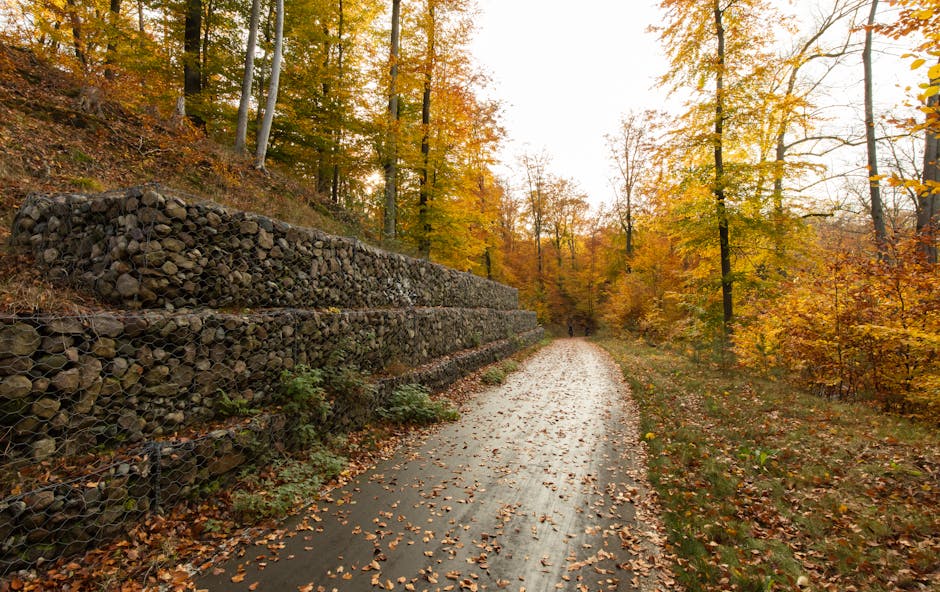The Art and Science of Retaining Wall Construction: Building Beauty and Functionality
When you think about landscape design, the first things that might come to mind are lush gardens, decorative pathways, or vibrant flower beds. But what if I told you that one of the unsung heroes of landscaping is something as sturdy and functional as a retaining wall? This often-overlooked structure not only serves practical purposes but can also add a striking aesthetic to your outdoor space. Let’s explore the ins and outs of retaining wall construction, uncovering its benefits, and providing tips for achieving the perfect balance between beauty and utility.
At its core, a retaining wall is designed to hold back soil and prevent erosion, particularly in sloped areas. However, they are so much more than just functional barriers. A well-designed retaining wall can transform an ordinary backyard into an extraordinary haven. Whether you’re dealing with a small slope or a steep hillside, these walls can create flat surfaces for planting, entertaining, or relaxing.
**The Benefits of Retaining Walls**
Retaining walls come with a myriad of benefits. Firstly, they effectively manage water runoff, protecting your property from erosion and flooding. A proper drainage system integrated into your retaining wall can guide excess water away from vulnerable areas, ensuring the longevity of both your landscape and the wall itself.
Moreover, retaining walls can enhance the usability of your yard. By leveling out uneven terrain, they create new, functional spaces. You can design multi-level gardens, install patios, or create raised flower beds, thus expanding your outdoor living area. For those with small yards, this expansion can be invaluable.
Aesthetic appeal is another significant benefit. With various materials available—like natural stone, concrete, or brick—you can tailor your retaining wall to complement your home’s architecture and landscaping. Whether you want a rustic look with weathered stones or a sleek modern design with smooth concrete, the possibilities are endless.
**Cost Considerations: Luxury vs. Budget-Friendly**
Now, let’s talk about the budget. Retaining walls can vary greatly in cost depending on the materials and complexity of the design. On one hand, you have luxurious options like natural stone or pre-cast concrete that exude elegance but may come with a hefty price tag. On the other hand, budget-friendly alternatives, such as timber or poured concrete, can still provide functionality without breaking the bank.
If you’re on a tight budget but still want a stylish look, consider combining materials. For instance, using less expensive blocks at the base and reserving the higher-end stones for the top layers can create a visually appealing design while keeping costs manageable.
**DIY vs. Professional Installation**
If you’re the hands-on type, a DIY approach can be a rewarding way to build a retaining wall. However, it’s essential to understand that constructing a retaining wall requires careful planning and execution. Factors such as wall height, soil type, and drainage systems must be considered. There are numerous online resources, including video tutorials and guides, that can assist you in this endeavor.
For those who prefer to leave it to the experts, hiring a professional ensures that the wall is built to code and is structurally sound. Professionals bring experience, knowledge, and equipment that can streamline the process, helping you avoid costly mistakes.
**Emerging Trends in Retaining Walls**
As with any design element, retaining walls are subject to trends. One of the most exciting developments is the use of eco-friendly materials and practices. Recycled materials, such as reclaimed wood or bricks, not only reduce waste but also add character and charm to your landscape. Additionally, integrating greenery, like vines or moss, into your wall design creates a living structure that blends beautifully with nature.
Another trend is the incorporation of technology. Smart drainage systems that adapt to rainfall and moisture levels are gaining popularity, ensuring that your retaining wall not only looks good but functions effectively.
**Conclusion: Beyond Functionality**
In conclusion, retaining wall construction is more than just a structural necessity; it’s an opportunity to enhance your landscape, improve functionality, and express your personal style. Whether you opt for a luxury installation or a budget-friendly DIY project, the benefits of a well-constructed retaining wall are undeniable. Embrace this versatile element of landscape design, and watch as your outdoor space transforms into a beautifully functional retreat.

